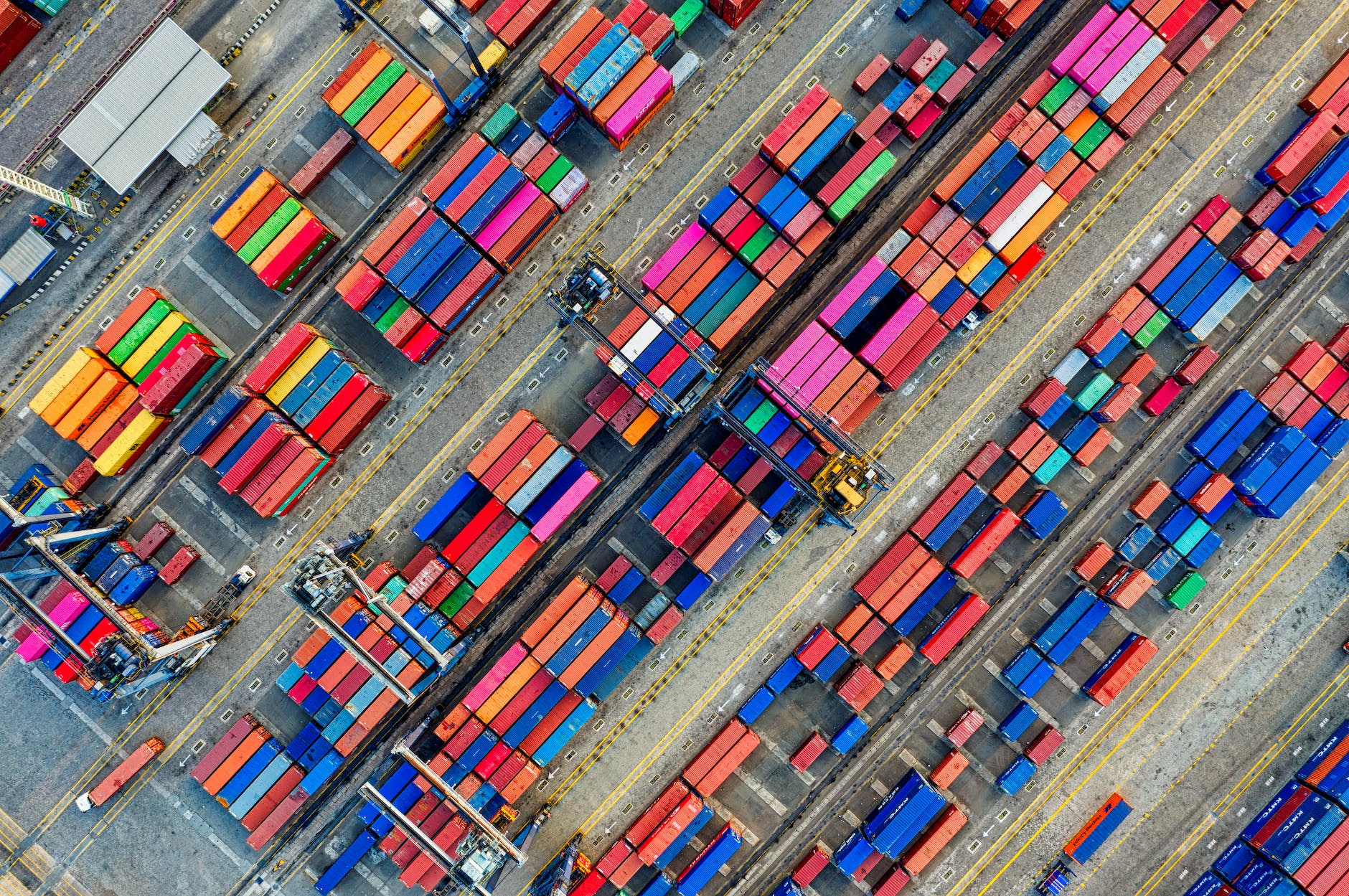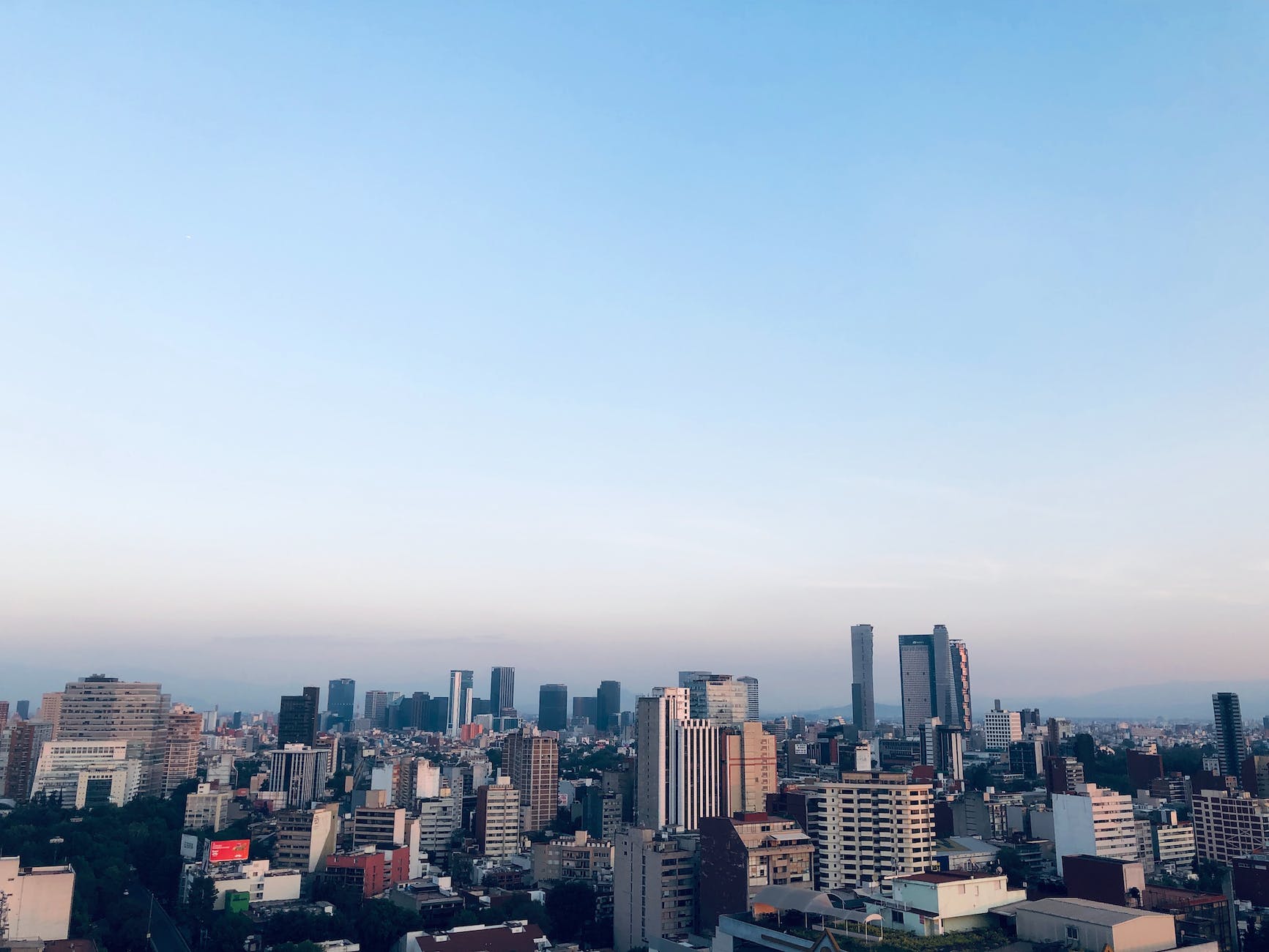In today’s increasingly complex and interconnected world, it is crucial for businesses and individuals alike to be well-informed about the various types of insurance coverage available to protect against potential risks. One such type of coverage that merits understanding is pollution liability coverage. This article aims to provide a comprehensive overview of pollution liability coverage, detailing its importance, scope, and potential implications for different stakeholders. Whether you are a business owner, a homeowner, or a concerned citizen, gaining an understanding of pollution liability coverage can help you navigate the intricate landscape of environmental risks and ensure you are adequately protected.
Understanding Pollution Liability
Pollution liability refers to the legal responsibility of a party, typically a business or individual, for any harm caused to the environment or human health due to pollution. It encompasses the cost of cleaning up pollution, as well as any legal fees and damages awarded to affected parties. Pollution liability coverage is an insurance policy that helps mitigate the financial risk associated with pollution-related incidents.
Definition of Pollution Liability
Pollution liability can be broadly defined as the legal obligation of a party to compensate for damages caused by pollution. Pollution can come from various sources, such as industrial processes, transportation, and waste disposal. Liability arises when pollution causes harm to the environment, including air, water, and land, or when it poses a risk to human health. Pollution liability coverage provides financial protection against these liabilities.
Occurrences that can lead to Pollution Liability
Several occurrences and activities can give rise to pollution liability. These include accidental spills or leaks, improper disposal of hazardous substances, emissions from industrial processes, and transportation accidents involving pollutants. It is essential for businesses and individuals to be aware of these occurrences and take appropriate measures to prevent or mitigate pollution risks.
Key parties involved in Pollution Liability
Pollution liability involves several key parties, each with their roles and responsibilities. The parties typically include the polluters or responsible parties, insurance companies, regulatory bodies, and affected third parties. The responsible parties are those who cause pollution and consequently bear the liability for any damages caused. Insurance companies provide pollution liability coverage to mitigate the financial risk. Regulatory bodies establish and enforce regulations related to pollution and ensure compliance. Affected third parties are individuals, communities, or other entities who suffer harm or loss due to pollution.
Types of Pollution Liability Coverage
Pollution liability coverage consists of various types of insurance policies designed to address specific aspects of pollution-related risks. These policies provide protection against on-site and off-site cleanup liabilities, third-party claims for bodily injury and property damage, and reimbursement for legal defense costs.
On-site cleanup Liability Coverage
On-site cleanup liability coverage protects the policyholder against the costs associated with cleaning up pollution that originates from their own property or operations. This coverage extends to the costs of containment, remediation, and disposal of pollutants on-site.
Off-site Cleanup Liability Coverage
Off-site cleanup liability coverage extends the coverage to pollution that migrates from the policyholder’s property to nearby areas. It ensures that the policyholder is financially protected from the costs of cleaning up pollution that affects neighboring properties, water bodies, or public spaces.
Third-party Claims for Bodily Injury and Property Damage
Pollution can cause harm to individuals and damage to their properties. Third-party claims coverage protects the policyholder against liabilities arising from bodily injury or property damage caused by pollution. This coverage includes medical expenses, rehabilitation costs, and compensation for property damage or loss.
Reimbursement for Legal Defense Costs
If the policyholder faces legal action related to pollution liability, the insurance policy can provide coverage for legal defense costs. This includes attorney fees, court costs, and other associated expenses.
Role of Insurance in Pollution Liability
Pollution liability insurance plays a crucial role in mitigating the financial risks associated with pollution-related liabilities. It offers protection to policyholders by providing coverage for cleanup costs, legal defense expenses, and potential damages awarded to affected parties.
Reasons for getting Pollution Liability Insurance
There are several compelling reasons for businesses and individuals to obtain pollution liability insurance. Firstly, it helps protect their financial resources in the event of a pollution incident. The costs of cleanup, legal fees, and potential damages can be substantial and potentially bankrupt a business or individual. Pollution liability insurance ensures that these costs are covered, allowing the insured party to focus on their business operations or personal well-being.
Additionally, pollution liability insurance may be required by law or regulations in certain industries or for specific activities. Companies or individuals involved in industries such as manufacturing, transportation, waste management, or energy production may be legally obligated to carry pollution liability insurance as a condition of operating their businesses.
Moreover, pollution liability insurance can provide peace of mind and help maintain a positive reputation. By demonstrating a commitment to responsible environmental practices and having adequate insurance coverage, businesses and individuals can enhance their credibility and foster trust among stakeholders.
How Insurance can Mitigate Risks
Pollution liability insurance helps mitigate risks by transferring the financial burden of pollution-related liabilities to the insurance company. In the event of a pollution incident, the policyholder can file a claim and receive financial compensation for cleanup costs, legal expenses, and damages awarded to affected parties. This allows businesses and individuals to avoid the potentially devastating financial consequences of pollution-related liabilities and ensures that affected parties are appropriately compensated.
Furthermore, insurance companies often provide risk management expertise and assistance to policyholders. They can help assess potential pollution risks, provide guidance on preventive measures and best practices, and offer resources for emergency response and damage control. By proactively addressing pollution risks with the support of insurance companies, policyholders can reduce the likelihood and severity of pollution incidents.
Key features of an ideal Pollution Liability Insurance Policy
An ideal pollution liability insurance policy should provide comprehensive coverage and tailored protection to the policyholder’s specific needs and circumstances. Some key features to consider when selecting a policy include:
-
Sufficient Limits: The policy should have adequate coverage limits to ensure that potential cleanup costs, legal defense expenses, and damages are fully covered.
-
Flexible Coverage: The policy should offer flexibility to customize coverage based on the policyholder’s specific industry, operations, and potential pollution risks. It should address both on-site and off-site cleanup liabilities, as well as cover third-party bodily injury and property damage claims.
-
Prompt Claims Processing: The insurance company should have a reputation for efficient and fair claims processing. Timely settlement of claims is crucial to minimize disruptions and financial losses for the policyholder.
-
Risk Management Support: The insurance provider should offer risk management services and expertise to help policyholders identify and mitigate potential pollution risks. This can include conducting environmental audits, providing training programs, and offering resources for emergency response planning.
-
Experienced Underwriting and Claims Professionals: The insurance company should have knowledgeable underwriters and claims professionals with expertise in pollution liability to ensure that policies are well-understood, properly underwritten, and efficiently processed.
By considering these features and working closely with an experienced insurance provider, policyholders can secure an ideal pollution liability insurance policy that comprehensively addresses their risk exposures.
Stakeholders in Pollution Liability Coverage
Pollution liability coverage involves various stakeholders who play distinct roles in the coverage process. Understanding their responsibilities and relationships is essential for a comprehensive understanding of pollution liability coverage.
Role of Insurer
The insurer is the entity that provides the pollution liability coverage. The insurer evaluates the risks associated with the policyholder’s operations and determines the premiums and coverage limits. They also handle policy administration, claims processing, and provide risk management support to policyholders.
Insurers employ underwriters who assess the risk profiles of potential clients, determine policy terms and conditions, and calculate premiums based on the assessed risk. Claims professionals, on the other hand, handle the claims process, including investigating claims, determining coverage eligibility, and facilitating the settlement of claims.
Role of Insured
The insured, typically businesses or individuals, purchase pollution liability insurance to protect themselves against potential liabilities arising from pollution-related incidents. The insured has the responsibility to disclose accurate and complete information about their operations, pollution risks, and prior claims history to the insurer during the underwriting process.
Additionally, the insured must comply with the terms and conditions of the insurance policy, such as implementing preventive measures to minimize pollution risks, promptly reporting any pollution incidents, and cooperating with the insurer during claims investigations.
Role of Regulatory Bodies
Regulatory bodies play a crucial role in pollution liability coverage. They establish and enforce regulations, guidelines, and standards related to pollution prevention, control, and liability. Regulatory bodies vary by jurisdiction and may include government agencies, environmental protection agencies, occupational health and safety departments, and other relevant authorities.
Regulatory bodies ensure that businesses and individuals comply with applicable pollution prevention and control measures. They may require proof of pollution liability coverage as a condition for obtaining permits or licenses for certain activities or industries. Non-compliance with regulatory requirements can lead to fines, penalties, and even legal action.
Understanding the position of bystanders and affected third-parties
Bystanders and affected third parties are individuals, communities, or other entities that suffer harm, injury, or damage as a result of pollution. They are not directly involved in the policy and coverage process, but their interests are vital in the context of pollution liability. When pollution occurs, bystanders and affected third parties may have legal rights to seek compensation from the responsible party.
Pollution liability coverage aims to protect the insured from potential claims and liabilities brought forth by affected third parties. By providing coverage for third-party claims for bodily injury and property damage, the insurance policy ensures that affected individuals and entities receive appropriate compensation for their losses.
Understanding the position and rights of bystanders and affected third parties helps shape pollution liability coverage to adequately address their potential claims. Insurance policies often include provisions to protect the interests of these individuals and entities, allowing for fair and impartial resolution of claims.
Insights into Pricing of Pollution Liability Coverage
The cost of pollution liability coverage varies depending on several factors, including the policyholder’s industry, operations, location, risk profile, and coverage requirements. Understanding the factors that determine the cost of coverage is crucial for budgeting and obtaining the most suitable insurance policy.
Factors determining the Cost of Coverage
Several factors influence the cost of pollution liability coverage. These factors typically include:
-
Industry and Operations: Industries with inherently higher pollution risks, such as manufacturing, chemical production, and waste management, may have higher insurance premiums. The nature and scale of the operations within the industry contribute to the overall risk assessment.
-
Risk Profile: The insurer assesses the policyholder’s risk profile, considering factors such as prior pollution incidents, compliance history, preventive measures implemented, and risk management practices. A favorable risk profile may result in lower premiums.
-
Location: The geographical location of the policyholder plays a role in determining the cost of coverage. Areas with higher pollution risks, such as proximity to environmentally sensitive areas or densely populated regions, may have higher premiums.
-
Coverage Limits: Higher coverage limits typically result in higher premiums. Policyholders should carefully assess their coverage needs to strike a balance between adequate protection and manageable costs.
-
Claims History: A history of pollution incidents and claims can impact the cost of coverage. Insurers may consider prior claims history when underwriting a policy, and policyholders with a negative claims history may face higher premiums.
-
**Preventive Measures: **Implementing robust preventive measures can demonstrate a commitment to pollution risk management and potentially lead to more favorable premiums.
How to estimate your Pollution Liability Coverage Costs
To estimate the cost of pollution liability coverage, policyholders should consider the factors that influence pricing and discuss their specific needs with insurance providers. It is advisable to obtain quotes from multiple insurers to compare coverage options and premiums.
Engaging with insurance professionals who specialize in pollution liability can provide valuable insights and help policyholders make informed decisions. Assessing risk profiles, leveraging risk management support, and considering potential changes in operations can also contribute to estimating coverage costs accurately.
Understanding Deductibles and Premiums
Deductibles and premiums are essential components of pollution liability coverage that policyholders should understand.
Deductibles: A deductible is the portion of a claim that the insured must pay before the insurance company covers the remaining costs. Deductibles can be set at different amounts depending on the policy and are typically agreed upon during the policy underwriting or renewal process. Higher deductibles often result in lower premiums, while lower deductibles increase the policyholder’s out-of-pocket costs but offer more immediate coverage.
Premiums: Premiums are the periodic payments made by the policyholder to the insurance company to maintain the insurance policy. They are determined based on the insured’s risk profile, coverage limits, deductibles, and other factors. Premiums can be paid annually, semi-annually, quarterly, or monthly, depending on the terms of the policy and the agreement between the insured and insurer.
Legal Framework around Pollution Liability Coverage
Legal regulations and guidelines play a significant role in shaping pollution liability coverage. Understanding the legal framework is essential for both insurers and insured parties to ensure compliance, address potential liabilities, and assess the adequacy of insurance coverage.
Important Regulations and Guidelines
Numerous regulations, laws, and guidelines govern pollution liability at local, national, and international levels. These may include environmental protection regulations, occupational health and safety standards, waste management regulations, and specific industry requirements.
For example, in the United States, the Comprehensive Environmental Response, Compensation, and Liability Act (CERCLA) and the Resource Conservation and Recovery Act (RCRA) establish legal frameworks for pollution liability and cleanup requirements.
The regulatory landscape is continuously evolving, and it is crucial for businesses and individuals to stay informed about changes and updates to relevant regulations. Working closely with legal advisors and insurance professionals can help ensure compliance and adequate insurance coverage.
Legal Consequences of Pollution
Pollution can have severe legal consequences for the responsible parties. The legal implications can include fines, penalties, injunctions, and court-ordered cleanup requirements. In some cases, criminal charges may be pursued against individuals or entities responsible for severe pollution incidents or intentional violation of environmental regulations.
Legal consequences can also extend to civil litigation, where affected third parties seek compensation for damages caused by pollution. These cases often result in substantial settlements or judgments against the responsible parties. Pollution liability coverage helps mitigate these legal risks by providing financial protection for cleanup costs, legal defense, and damages.
How Legal Changes Impact Coverage
Legal changes and updates to regulations can have significant implications for pollution liability coverage. New regulations may introduce additional requirements or increase compliance standards, impacting the potential liabilities and risks faced by insured parties. Insurers and insured parties must stay abreast of regulatory changes to ensure that their insurance policies remain current and effective.
Legal changes can also affect the interpretation and enforceability of insurance policies. Insurance contracts may need to be reviewed and revised to align with new legal requirements. Insurance professionals and legal advisors can provide guidance on updating insurance policies to address changes in the legal landscape effectively.
Court Cases influencing Pollution Liability Coverage
Court cases can shape the interpretation and application of pollution liability coverage. Legal precedents set by significant court decisions establish guidelines and standards for pollution liability claims and coverage. These precedents influence how insurance policies are underwritten, claims are assessed, and potential liabilities are managed.
Studying court cases related to pollution liability can provide valuable insights into emerging trends and potential coverage issues. The interpretation of policy language, exclusions, and limitations in the context of court decisions can help insurance professionals and insured parties navigate the complexities of pollution liability coverage.
Inclusions and Exclusions in Pollution Liability Coverage
An insurance policy for pollution liability coverage includes both inclusions and exclusions that define the extent of coverage provided. Understanding these inclusions and exclusions is crucial for insured parties to evaluate the adequacy of coverage and potential gaps in protection.
Common Coverage Inclusions
Pollution liability coverage typically includes the following common inclusions:
-
Cleanup Costs: The policy covers the costs associated with cleanup, containment, and disposal of pollutants.
-
Bodily Injury: Coverage extends to bodily injuries suffered by third parties due to pollution-related incidents. This includes medical expenses, pain and suffering, and rehabilitation costs.
-
Property Damage: The policy provides coverage for damage or loss of property caused by pollution. This can include the cost of repairs, replacement, or loss of use.
-
Legal Defense Costs: Pollution liability coverage includes reimbursement for legal defense expenses, such as attorney fees, court costs, and expert witness fees when the insured faces legal action related to pollution liability.
-
Emergency Response Costs: Policies may include coverage for emergency response expenses, such as containment measures, cleanup crews, and equipment rental, incurred immediately after a pollution incident.
General Exclusions from the Policy
Insurance policies for pollution liability also include specific exclusions that limit the coverage provided. Common exclusions in pollution liability coverage may include:
-
Intentional Pollution: Coverage is typically excluded for deliberate acts of pollution or pollution caused with the intent to cause harm.
-
Known Conditions: Existing or known pollution conditions that were not disclosed to the insurer during the underwriting process may be excluded from coverage.
-
Fines and Penalties: Policies usually do not cover fines, penalties, or punitive damages imposed by regulatory bodies or courts.
-
Pollution from Non-Covered Substances: Coverage can be limited to specific substances or pollutants listed in the policy. Pollution from substances not covered by the policy may be excluded.
-
Contractual Liability: Policies may exclude liability assumed under contract, except for incidental contracts related to the insured’s core operations.
Understanding these exclusions is crucial to evaluate potential coverage gaps. Policyholders should carefully review policy documents, discuss exclusions with their insurance providers, and assess the need for additional coverage or risk management measures to address any gaps.
Understanding Limitations within a Policy
In addition to inclusions and exclusions, pollution liability policies often contain various limitations that define the scope of coverage. These limitations may include:
-
Coverage Territory: Policies may specify the geographical limits within which coverage applies. The coverage may be limited to a specific country, region, or may extend internationally.
-
Policy Period: The insurance policy is typically effective for a specified period of time, known as the policy period. Claims arising outside this period may not be covered.
-
Aggregate Limits: The policy may impose aggregate limits on the maximum amount the insurance company will pay for all claims during the policy period.
-
Sub-Limits or Deductibles: Sub-limits or deductibles may be specified for certain types of claims or pollutants. This means that coverage for those claims or pollutants may be subject to separate limits or deductibles.
Policyholders should carefully review these limitations and discuss any concerns or specific requirements with the insurer. Understanding the limitations within a policy ensures that the insured party is aware of the extent of coverage provided and can make informed decisions regarding their risk management strategies.
Scope of Pollution Liability Coverage
The scope of pollution liability coverage can vary depending on the policyholder’s needs and specific circumstances. Understanding the scope of coverage is crucial for insured parties to assess the adequacy of their insurance policies.
Coverage in Native Country
Most pollution liability policies provide coverage within the policyholder’s native country. Coverage usually extends to pollution incidents that occur within the territory specified in the policy. It is important to carefully review the policy language and discuss any limitations or exclusions related to coverage territory with the insurer.
International Scope
For businesses or individuals with international operations, it may be necessary to consider pollution liability coverage that extends beyond the native country. International pollution liability coverage can provide protection against pollution-related liabilities arising from operations, transport, or activities in foreign countries.
International coverage may be subject to specific terms, conditions, and premium adjustments based on the countries involved and associated pollution risks. It can be essential for multinational corporations, organizations engaged in international trade, or businesses with subsidiaries or operations overseas.
Circumstances under which Coverage may Expand or Contract
The scope of pollution liability coverage may expand or contract depending on the policy language and specific circumstances. Policyholders should be aware of potential scenarios that could impact coverage, such as changes in operations or acquisitions/divestitures.
Expanding coverage may be necessary when a policyholder undertakes new activities or expands existing operations that involve increased pollution risks. In such cases, policyholders should proactively discuss these changes with their insurance provider to ensure that the policy remains comprehensive and aligned with the new risks.
Conversely, coverage may contract when a policyholder ceases certain operations or divests assets. Policyholders should communicate any changes promptly to the insurer to avoid potential coverage gaps and reassess their insurance needs accordingly.
Understanding the circumstances that can impact the scope of coverage helps policyholders proactively manage and adjust their pollution liability coverage to effectively address their risk exposures.
How to File a Claim under Pollution Liability Coverage
When a pollution incident occurs, filing a claim under pollution liability coverage is crucial to initiate the claims settlement process. Policyholders should be familiar with the steps involved, the required documents, and the typical claim settlement process to ensure a smooth and efficient claims experience.
Steps to File a Claim
-
Notify the Insurance Company: The first step in filing a claim is to promptly notify the insurance company about the pollution incident. Contact the insurer’s claims department or designated claims representative, provide relevant details, and initiate the claims process.
-
Gather Documentation: Collect all necessary documentation related to the pollution incident, including incident reports, regulatory notifications, photographs, witness statements, and any other relevant evidence. Document the timeline of events and the specific damages or injuries caused by the pollution.
-
Complete Claim Forms: The insurance company may require completion of claim forms or submission of specific documents. Follow the insurer’s instructions and provide all necessary information accurately and thoroughly.
-
Cooperate with Claims Investigation: The insurer will initiate an investigation to assess the validity and extent of the claim. Cooperate fully with the investigator, providing any additional information or documentation as requested.
-
Evaluation and Settlement: Based on the investigation findings, the insurer will evaluate the claim and determine the coverage and settlement amount. The insurer will communicate the settlement offer to the policyholder, who can accept the offer or negotiate based on the policy provisions and their specific circumstances.
-
Resolution and Payment: Once the settlement is accepted, the insurer will complete the necessary paperwork and initiate the payment process. The policyholder will receive the agreed-upon settlement amount in accordance with the terms of the policy.
Documents required for Claim Filing
The specific documents required for claim filing may vary depending on the insurance company, policy terms, and the nature of the pollution incident. However, the following documents are typically necessary:
-
Incident Report: A detailed report describing the pollution incident, its causes, and the resulting damages or injuries.
-
Regulatory Notifications: Copies of any notifications or reports filed with regulatory bodies, as required by applicable regulations.
-
Photographs and Documentation: Visual evidence, such as photographs or videos, demonstrating the pollution, damages, or injuries. Supporting documentation, such as bills, invoices, or estimates, related to the cleanup, medical expenses, or property damage may also be required.
-
Witness Statements: Statements from individuals who witnessed the pollution incident or its aftermath, supporting the policyholder’s claims.
-
Emergency Response Reports: If emergency response measures were undertaken, relevant reports documenting the actions taken and associated costs.
-
Legal and Regulatory Documents: Any legal correspondence, notices, or citations received related to the pollution incident.
Policyholders should consult their insurance policy and contact their insurance provider for specific documentation requirements pertaining to their claim.
Understanding the Claim Settlement Process
The claim settlement process involves evaluating the validity and extent of the claim, determining coverage, and agreeing upon a settlement amount. The specific steps and timelines may vary depending on the nature of the pollution incident, policy provisions, and the insurance company’s procedures.
Throughout the settlement process, the insurer will consider the policy language, exclusions, and coverage limits to determine the extent of their financial obligation. They may employ internal claims adjusters or engage external experts to assess the damages, evaluate the claims, and negotiate settlement amounts.
Policyholders should review the settlement offer carefully, ensuring that it aligns with the policy terms and adequately covers the damages and liabilities. If necessary, policyholders can negotiate with the insurer based on their specific circumstances, providing additional supporting documentation or clarifying any questions.
Once the settlement is agreed upon, the insurance company will finalize the necessary paperwork and initiate the payment process, ensuring that the policyholder receives the settlement amount within the agreed timeframe.
Preventive Measures to Reduce Pollution Liability
Preventing pollution incidents is integral to reducing pollution liability risks. Implementing preventive measures, conducting environmental audits and assessments, and providing employee training and awareness are essential practices for mitigating pollution-related risks.
Preventive Policies and Practices
Developing and implementing preventive policies and practices is crucial for minimizing pollution risks. This can include:
-
Compliance Programs: Establishing robust compliance programs that ensure adherence to environmental regulations, guidelines, and standards.
-
Risk Assessments: Conducting regular risk assessments and identifying potential pollution risks associated with operations, processes, and resources.
-
Pollution Prevention: Implementing pollution prevention techniques and technologies to minimize or eliminate the generation of pollutants.
-
Waste Management: Establishing effective waste management systems, including proper storage, handling, transportation, and disposal of hazardous materials.
-
Spill Prevention and Response: Developing spill prevention and response plans, including appropriate containment measures, training programs, and emergency response procedures.
-
Monitoring and Reporting: Setting up monitoring systems to detect and address potential pollution incidents or deviations from established environmental controls.
By integrating these preventive measures into their operations, policyholders can proactively mitigate pollution risks, reduce the likelihood of pollution incidents, and demonstrate a commitment to environmental stewardship.
Environmental Audits and Assessments
Environmental audits and assessments are critical tools for identifying potential pollution risks and ensuring compliance with regulations. These audits and assessments can be conducted internally or by third-party consultants with expertise in environmental management and pollution prevention.
Environmental audits involve evaluating an organization’s environmental performance, facilities, processes, and systems to identify gaps in compliance and areas for improvement. The audit findings help organizations implement corrective actions and preventive measures to address deficiencies and reduce pollution risks.
Environmental assessments focus on evaluating the potential environmental impacts associated with specific projects, operations, or activities. These assessments guide the development of mitigation measures and environmental management plans to minimize pollution risks and support sustainable practices.
By regularly conducting environmental audits and assessments, policyholders can proactively identify and address potential pollution risks, enhance compliance, and ensure that their pollution liability coverage adequately addresses their evolving needs.
Role of Employee Training and Awareness
Employee training and awareness are vital for ensuring a culture of environmental responsibility and pollution prevention within an organization. Policies and practices related to pollution control and compliance should be communicated effectively to all employees, and specific training programs should be developed to address their roles and responsibilities.
Employee training programs should cover topics such as:
-
Environmental Regulations and Standards: Providing an overview of applicable regulations, standards, and guidelines governing pollution prevention and control.
-
Pollution Risks and Prevention: Educating employees about potential pollution risks associated with their roles, including proper handling and disposal of hazardous substances, spill response procedures, and pollution prevention techniques.
-
Emergency Response: Training employees on emergency response procedures in the event of a pollution incident, including the proper reporting channels, evacuation protocols, and communication strategies.
-
Compliance: Emphasizing the importance of compliance with environmental regulations and guidelines, and the potential consequences of non-compliance.
Regular training, refresher courses, and ongoing communication about environmental responsibilities help instill a sense of ownership and drive among employees, leading to enhanced pollution prevention efforts and overall risk reduction.
In conclusion, understanding pollution liability coverage is crucial for businesses and individuals who face potential liabilities due to pollution incidents. By comprehending the definition, types, role of insurance, key stakeholders, pricing, legal framework, coverage inclusions and exclusions, claim filing procedures, and preventive measures, policyholders can navigate the complexities of pollution liability coverage more effectively. Additionally, working closely with experienced insurance professionals and legal advisors ensures that pollution liability coverage aligns with specific needs, offers comprehensive protection, and helps mitigate the financial risks associated with pollution-related liabilities.




